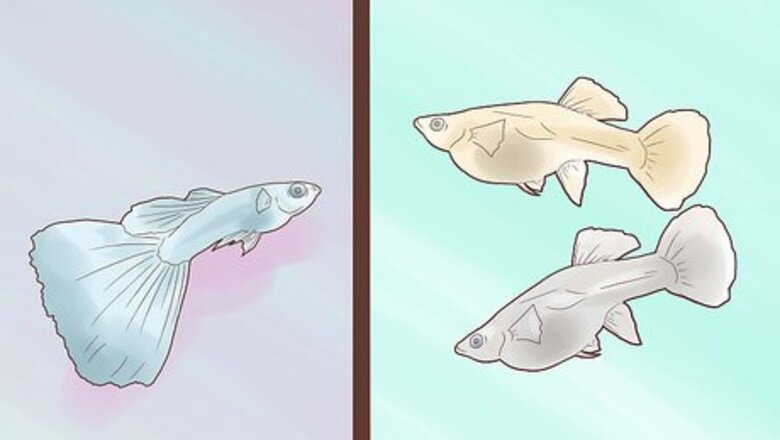
views
Breeding Your Guppies
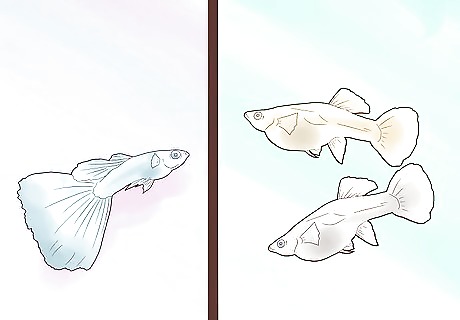
Select the fish you want to breed. Keep in mind the number of fish you want to breed, each fish’s coloring, and the shape of their tails. If you choose two fish to breed who have the same color patterns, the fry will also have that color pattern. The same principle applies for fin shape. Number of fish: Generally, you will want to select one male and two or three female guppies for breeding. When there is a ratio of one to one, the male often becomes aggressive, chasing the female around the tank. With a one to three ratio, the male’s attention is split between three females, making breeding a less stressful process for the females. Color pattern: There are several basic guppy patterns. These include Wild (grey or olive coloring), Albino (light colors or white with red eyes,) Blonde (light colors with black pigment,) and Blue (shimmering blue color.) Tail shape: The shape of guppy tails can range from a rounded back fin to a sword-like shape. There are many different shapes and sizes that guppy tails come in, but the most common are the Delta (which is a large triangular shape,) the Fantail (which is shaped like a fan,) and the Round tail (which is a small, round shape.)
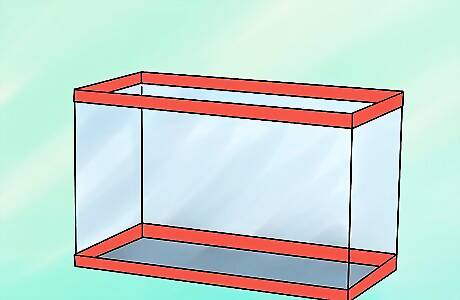
Select the breeding tank. You should select a 10 to 20 gallon tank with a heater and a gentle filter. You want the filter to be gentle because otherwise the baby guppies (which are called fry) could be sucked up the filter and killed. If you think your filter is too strong, cover the opening of the filter with sheer tights. The tights will allow the water to be filtered, but will also protect the fry.

Set up the tank. Sadly, guppy parents can turn rather cannibalistic so you will need to provide the fry with hiding places for after they are born. Guppy fry tend to sink, so use low-floating plants for their cover. Some high cover is also required as healthy fry will swim upwards. Do not use any substrate. Substrates are the rocks/imitation rocks used to cover the bottoms of fish tanks. A bare bottom tank is good for fry as it cleans easily and you can record how many fry are alive or how much they eat. Java moss or spawning moss provides a nice hiding spot for guppy fry.
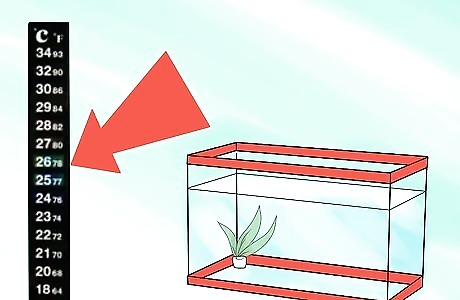
Adjust the tank for your fish’s needs. Set the temperature to around 77-80 degrees Fahrenheit (25 to 26.66 C) while the females and male are in the tank together. Before you place the guppies in the breeding tank, purchase food with a higher nutritional value in order to promote healthy breeding.
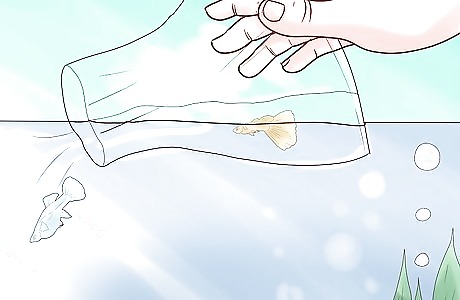
Place the guppies in the breeding tank. At this point, all you can do is wait for your fish to breed. Place the male back in the regular tank when you notice that your female(s) are pregnant. You can tell whether a female fish is pregnant or not by looking to see if there is a dark mark on her abdomen. This mark is called a gravid spot. All female fish will develop this when pregnant, but it becomes noticeably darker when the eggs have been fertilized.

Know when your fish is about to give birth. Generally, the gestation period will take 26 to 31 days. When your female guppy is ready to give birth, her stomach will be very large and her gravid spot will be a deep black (or dark maroon if you are breeding albino or blond guppies.) Her stomach will also square off like a cardboard box rather than growing rounder. Be prepared for the fact that guppies give birth to live babies and not eggs. You will have to monitor your pregnant female closely so that you are there when she gives birth so that you can remove her from the tank immediately after (she may eat her babies otherwise.) Some signs of a fish going into labor are: being very still and secluding herself, shivering (contractions), hanging out near the heater, or a change in appetite (including refusing to eat, or spitting her food out.)
Taking Care of the Fry
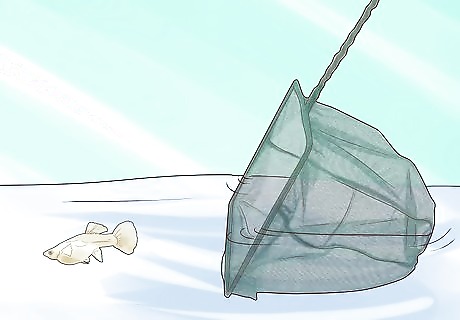
Remove your female fish from the breeding tank once the fry have been born. While this may seem like a cruel practice, guppy fry are actually born fully prepared to survive on their own. Also, as stated about, mother guppies can occasionally become cannibalistic and will eat their babies. If you are not able to be there when your female gives birth, make sure to provide the fry lots of aquarium plants to hide in.
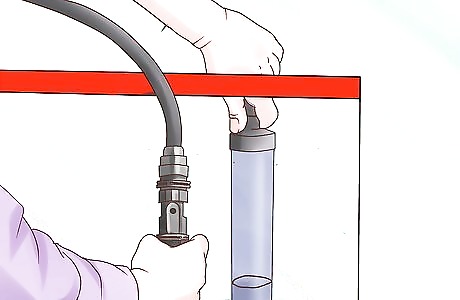
Keep the tank clean and at a healthy temperature. Fry need to live in a tank that is around 78 degrees F (25.5 degrees C.) Keep your tank at this temperature until the fry are fully grown. The tank will also need to be cleaned often. Siphon the tank carefully every time it gets too dirty and do 40% water changes every few days to keep the water clean.
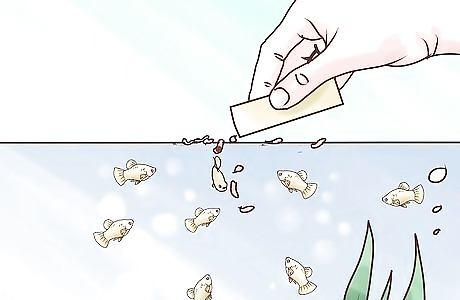
Feed the fry the right food. Guppy fry eat brine shrimp, micro-worms or powdered flakes. They should be fed twice a day. Guppies enjoy both meat and vegetables. You should feed your guppies vegetable flakes, as well as standard flakes. Remember that fry are tiny and if you place too much food in the tank, the excess food that goes bad while sitting in the water could make your fry sick, or even kill them. Newborn fry should be fed recently hatched brine shrimp so that the guppies reach their greatest growth potential. If you want to give your guppies a treat, place a small amount of boiled spinach in their tank.
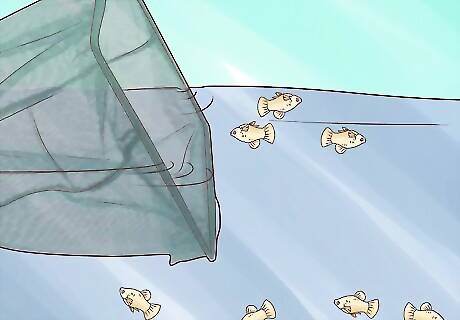
Take steps to ensure that your fry are healthy. This means removing any fry that have died. Dead fry will float to the top of the tank, making it easy to scoop them up. Keep track of how many fry die. If you notice that there is a high amount of fry death, you will want to figure out what is killing them. Change the water and switch to a different type of food. Any accumulated waste is bad for guppy health.

Move the fry to the normal tank when they get big enough. When the fry are a good size, or about a month and a half to two months old, they will be ready to fend for themselves outside of the breeding tank. You can put them into your normal tank with non-aggressive fish, sell them to your local pet store, or give them to friends as gifts.



















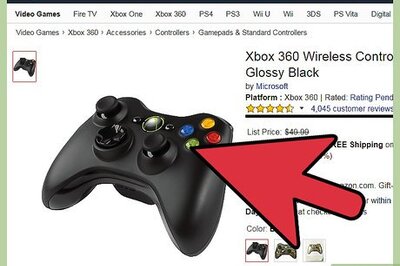
Comments
0 comment